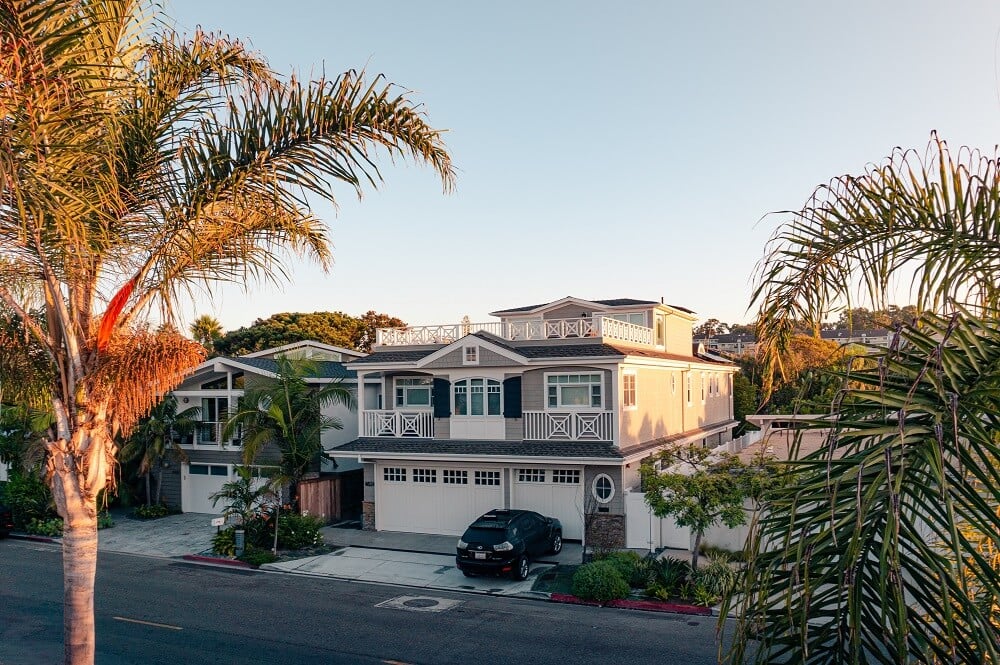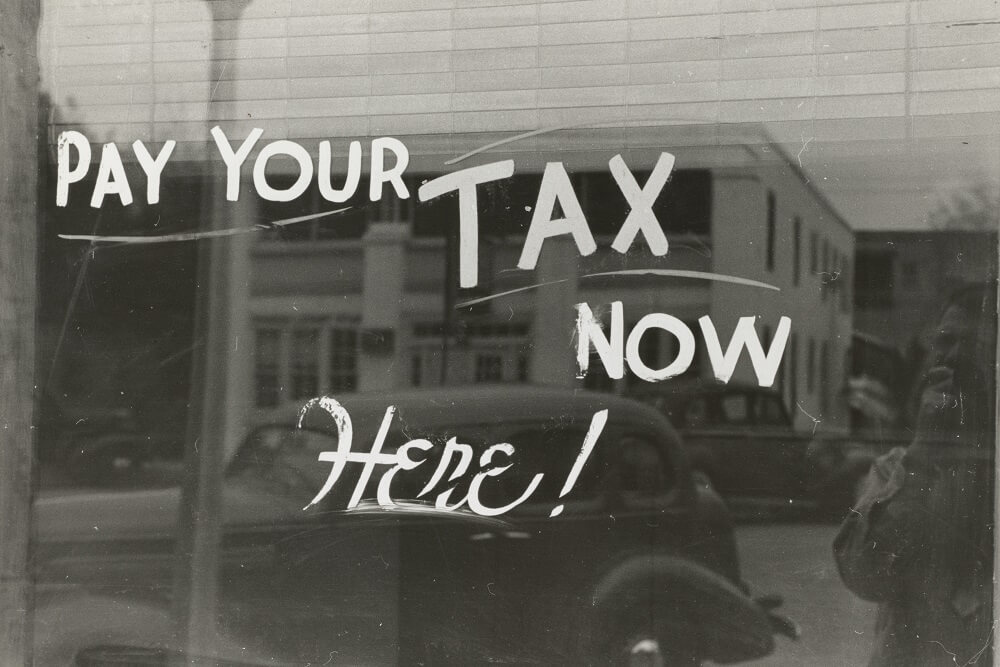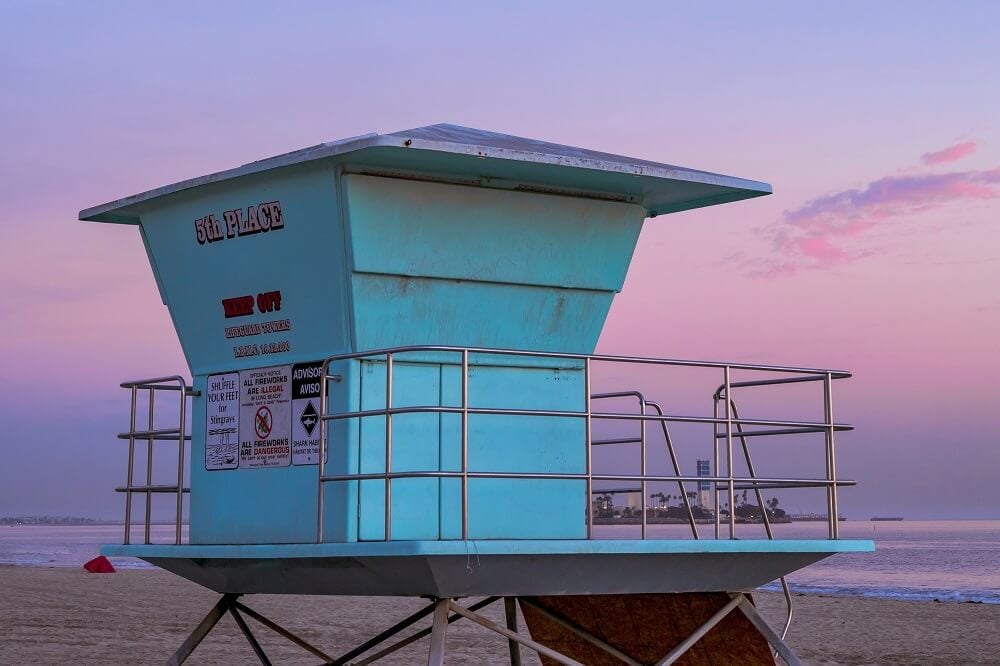Airbnb & Short-Term Rental Rules and Regulations in California (2024)
Lasted Updated: April 2024
If you’ve been thinking about starting or growing your short-term rental business in California, there’s never been a better time to do so. Statista projects 3.62% annual growth in the industry in the United States alone by 2026, leading to a potential market volume of $20.359 million.
Not only is the short-term rental industry in California and beyond making the potential of owning property a reality for a larger percentage of younger adults who can now (pretty much only) afford a house payment by offsetting it with rental income, but it’s also encouraging the development of other various, unique short-term rental businesses run by people seeing impressive returns on their investments.
The bottom line? There’s still room for more to enter the short-term rental market both in the U.S. and California, but as the market share of such properties grows so too have local regulations that govern how and where businesses can operate.
As a result, navigating today’s short-term rental market means mastering the various rules and regulations not just by state but also by city or county. Before you start to stress that owning a short-term rental business in California might be more headache than it is worth, though, take a moment and review this resource.
Use this guide as your go-to for all things related to the short-term rental industry in the State of California. We’ve filled it with a concise yet comprehensive review of key guidelines and crucial considerations so that your role as a short-term rental operator in California is a streamlined success.
What’s Considered a “Short-Term Rental” in California?
First things first: what is the definition of a “short-term rental”? Every state provides its own blanket definition applied to this type of property, so it is best to begin with these basics for the state of California.
According to the California Senate Bill No. 60, Chapter, 307, a “short-term rental” (sometimes shortened to “STR”) in the state refers to any residential property or portion of a residential property that is rented to an individual or group for 30 consecutive days or less.

Simple, right? Well, yes…and no. For example, In some California markets, short-term rental and “vacation rental” may be used interchangeably. Be careful, though, as some municipalities outright prohibit vacation rentals (so you want to ensure you research the right terminology for your region).
Moreover, with the success of Airbnb and the subsequent exponential expansion of the industry, this rather general regulation has been adjusted and adopted with various parameters by individual cities and communities in California. We’ll walk through those city-specific elements in a moment, but this general definition is a strong starting point, particularly for those trying to figure out whether the short-term rental industry is for them.
Starting a Short-Term Rental Business in California
The very first step toward starting your business in the State of California is to register your business with the appropriate state agencies. Registering your business isn’t only the “professional” thing to do—it’s required to be considered in compliance with local codes.
In short, registering your California short-term rental business ensures it’s legitimate and thus potentially protects you from certain legal or financial issues and damages. Registering your short-term rental business is also helpful if you think you’ll eventually look for loans or create separate business bank accounts to manage your funds (hopefully, of which there will be a lot of!).
Creating an LLC for your Short-Term Rental Business
There are multiple structures you can choose for your STR business, including:
- Corporation
- Limited Liability Company (LLC)
- Limited Partnership
- General Partnership
- Limited Liability Partnership
- Sole Proprietorship
Each of these options comes with advantages and disadvantages, making it worth your time to research each thoroughly. For a full description of each option as it is defined in the eyes of the State of California, please visit the Secretary of State’s “Entity Types” page.
Which is the best? Again, it’s totally up to you. However, if you choose to register your STR business as a limited liability company (LLC), that choice comes with a bit of a financial safety net. Categorizing your short-term rental business as an LLC means that you can protect your personal assets. This is because, under the parameters of an LLC, these personal assets are considered separate from your business debts/assets and, thus, are protected in the event of a lawsuit involving your business.

LLCs also come with the benefit of greater flexibility in how you choose to run your short-term rental business and manage your profits. LLCs also tend to keep state reporting requirements relatively minimal. For more on the implications of an LLC for your business, including fees, tax structures, and additional requirements visit the State of California Franchise Tax Board.
Required Documentation to Start a California Short-Term Rental Business
Once you’ve decided on a business structure, your next steps will be to pull together the required documentation to officially complete your California short-term rental business registration. This involves submitting the following documents to the Secretary of State for California:
- Proposed name of your business
- Articles of Organization or Incorporation (for LLCs or Corporations)
You’ll also need to file for a series of permits and licenses. This usually starts with applying for your Employer Identification Number (EIN) from the Internal Revenue Service. Then, you will need to check local city or county requirements for your short-term rental business.
For example, in cities like San Francisco and San Jose, you’ll need to register your business there in addition to registering with the state. You’ll also need to account for any required local short-term rental permits (more on these later when we discuss specific cities) as well as tax obligations.
Tax Implications for California Short-Term Rentals
While the specific rules and requirements for operations will vary depending on locality, the vast majority of short-term rentals in California will be subject to taxation. Because California is a state with state income tax, you’ll be subject to both federal and state taxes, as well as a Transient Occupancy Tax on short-term rentals, ranging from 6% to 14% depending on the locality.
Federal Tax Implications
The United States government considers a property to be a short-term rental business if it meets the following qualifications:
- You rent your property out for a minimum of 14 calendar days each year
- You use that property personally for no more than 14 calendar days (or more than 10% of the time that your property is occupied in a calendar year)
If you meet both of these requirements, you will have to register it as a short-term rental business. However, that also means you can maximize your potential federal tax benefits and deductions. Common expenses you can deduct when it comes to your short-term rental business property include:
- Repairs and maintenance
- Insurance premiums
- Taxes (like the California Transient Occupancy Tax—more on this in the next section!)
- Utilities like water, gas, and electricity
- Supplies like bed linens or bath towels (and even wine glasses or pool toys!)
- Legal and accounting fees
To maximize these deductions and to make the smartest financial moves when preparing your taxes, we suggest working with a knowledgeable California-based accountant.
The Transient Occupancy Tax (TOT)
The most universal California vacation rental tax is the Transient Occupancy Tax (TOT), which applies to nearly all short-term rental properties in the state. Generally speaking, if you are accepting payment from short-term guests in a home you own, you will be responsible for collecting the TOT from them. This tax, which consists of a percentage of the nightly rental rate, must be paid to state entities to remain in good standing as a business.

There is not one TOT rate set by the state of California; rather, the TOT rates are set by local governments and thus are dependent on the location of your rental property. Typically, though, the TOT falls between 6-15% of a short-term rental’s nightly rate. For example, the San Diego TOT rate in San Diego is 10.5%, while the San Francisco occupancy tax is set at 14%.
Airbnb and Short-Term Rental Rules by Major California City
Whew! We made it through the major points of setting up your short-term rental business in California. Establishing your business and accounting for TOT, though, is only the tip of the proverbial iceberg when it comes to setting up your California business. Recall that cities throughout California have the right to establish their own rules and regulations when it comes to short-term rental properties. This can mean different permits, restrictions, and permissions all depending on what city will be host to your short-term rental business. Given this variability, you must become well-versed in your city’s regulations so that you can ensure that you are in compliance.
New Rules to Reflect a Thriving Market
Part of these variations in short-term rental regulations across California is owed to the rapid rise of the short-term rental industry amid previously lax (or non-existent) municipal regulations.
When Airbnb entered the market, the industry took off. Airbnb alone reported more than 300 million guest check-ins in its first decade of business. Given that fast-paced growth, it was not surprising that local growing pains would follow. Local communities, particularly those popular with tourists, at times found themselves inundated with short-term renters.
Accordingly, in an effort to foster short-term rental that meshed seamlessly with their neighborhoods and provided the optimum experience for guests, many California cities began to adopt regulations to manage the market. These new rules were not so much to punish travelers (“guests”) or short-term rental owners (“hosts”), but rather to establish a level playing field to ensure the safety and satisfaction of guests, hosts, and their larger communities.
Generally Shared Rules and Regulations Across California
First, let’s cover the points that are most often shared between short-term rental ordinances. Generally speaking, most major California cities include rules and regulations such as:
City Registration and Fees
The vast majority of cities in California require short-term rental businesses to register either or both their business and their properties with the city. These applications often are accompanied by fees, which vary widely depending on the municipality.
Occupancy Rules
Many California city ordinances agree that short-term rentals need also to be primary residences. The definition of a primary residence varies between municipalities, but generally speaking, it means that you live full-time at your short-term rental address for at least a portion of the year (anywhere from 60 days to 9 months). Some cities also restrict such properties by:
- Dwelling type: not all properties are considered equal in the eyes of short-term rental ordinances. Many cities, for example, place restrictions on the percentage of short-term rental units in a given multi-unit residential complex. Others prohibit such rentals housed in certain accessory structures, like attics or pool houses.
- Dwelling location: In larger and more populous (or popular) locations, cities tend to restrict short-term rental properties to specific zones or districts of the city.
- Occupant number: capping capacity is also a common theme among short-term rental legislation in California. While these rules can vary, generally speaking, California cities cap occupancy in a given rental unit to two adults per bedroom (up to a total of 10 adults per unit).
- Minimum stay length: several California cities mandate that short-term rental reservations must meet a minimum number of days. Other cities use these minimums to eliminate the entire market by stating the minimum stay length is weeks -or months- long.
Promote Safety
Guests in a short-term rental property expect safety and security in their accommodations, so many California ordinances stipulate best practices when it comes to promoting safety. These typically include:
- Clearly stated emergency information: this can include signs indicating the location of fire extinguishers or emergency exits throughout the short-term rental unit.
- Designated contact person: many municipalities mandate that you elect a local contact person who will be “on-call” in case there are any issues with the short-term rental. This contact person is particularly important if your city allows un-hosted short-term rentals or if you will be far away for a given time.
- Meets all local building and safety codes: keeping up with the maintenance for your short-term rental is imperative, as many California cities include requirements relating to maintenance in their laws. These regulations require that you keep all rental units up to code.
Promote Neighborliness
Also central to many California municipal codes relating to short-term rentals are articles that encourage the well-being of the overall neighborhood. These regulations can include restrictions on:
- Noise: many California cities require short-term rentals to follow the rules of local noise ordinances
- Parking: some California cities, particularly those already plagued by car congestion, enforce parking limitations or restrictions for such rental properties
- Trash: several cities in California also impose garbage guidelines for short- term rental units.
Now, let’s look at some of the major cities in California to get a sense of how their short-term rental requirements vary. This city-by-city review will expand on these general points by noting the key unique factors of each municipality’s codes when it comes to short-term rentals. Consider these variations, additions, and exceptions as further steps you’ll need to take beyond the general guidelines outlined earlier.
Los Angeles Airbnb Rules
According to the Los Angeles Daily News, the “City of Angels” has rocketed to the rank of the fourth-best city for new Airbnb hosts in 2021, which has led many to ask: “can I Airbnb my apartment in Los Angeles”?

The short answer is yes, but setting up your short-term rental and ensuring you are meeting the Airbnb laws in Los Angeles. While there is not a requirement to register your short-term rental business with the city, Los Angeles does mandate that rental owners take a few important steps as set out in the Home Sharing Ordinance (CF 14-1635-S2):
Register Your Short-Term Rental for Your Home Sharing Registration Number
To make your listing official, you’ll need to register your home with the city to acquire your Home Sharing Registration (HSR) number. These applications can be completed online and require an application fee of $89. Once approved, you will receive an eight-digit registration number (HSR##-######) that you must list on any short-term rental listing sites like Airbnb. While you wait for your approval, the city will provide you with a temporary number to ensure you are within compliance. Once approved, your HSR number is valid for one year but can be renewed.
Meet the City Requirements for an Approved Property
As part of your registration for your HSR number, you will need to confirm the eligibility of your property. This means you will need to show proof of:
Primary Residency
Los Angeles requires that your short-term rental property is your primary residence and that you rent it out for no more than 120 nights per year. Proof of residency can be shown through official documents that bear your primary address. These might include your:
- Driver’s license
- Insurance bill
- Paystub
- Voter registration card
Renters and owners alike can list their Los Angeles short-term rental properties provided the following two caveats are kept in mind:
- If you rent the property, you will need to acquire a signed affidavit from your landlord that approves your use of the space as a short-term rental.
- The Los Angeles Rent Stabilization Ordinance (RSO) prohibits any property that falls under its jurisdiction to be used for a short-term rental business. The vast majority of Los Angeles single-family homes built before the year 1978 fall into this category, so make sure to double-check the status of your property before applying.
TOT Registration Certificate
Los Angeles requires that all short-term rental properties register for a TOT Registration Certificate with the Department of Finance. The only way to avoid TOT in Los Angeles is to allow rentals of 30 days or more in length. If this is the case for your short-term rental property, you will need to complete the city’s TOT Exemption Form.
Extended Home-Sharing in Los Angeles
Los Angeles caps the number of nights eligible for a given short-term rental to 120 per calendar year. If, however, you want to rent your property for more than the maximum of 120 nights, you can apply for extended home-sharing. To complete this application, you must be able to prove the following criteria:
- You’ve had a valid HSR for at least six months or have already hosted for a minimum of 60 days
- You can show that you’ve notified your neighboring occupants by mail to inform them of your intentions
- You have not had more than one citation issued against your short-term rental
- You have never had your HSR number suspended or revoked
In addition to meeting these requirements, those who wish to apply for an extended home-sharing permit in Los Angeles should prepare themselves for some substantial application fees. While the fee for the home-sharing permit and its renewal is only $89, the extended home-sharing permit comes with an additional fee of $850. If an extended homes-sharing permit application requires additional “discretionary review,” the fee grows exponentially to $5,660.
Long Beach Airbnb Laws
Compared to many of California’s other metropolitan areas, the city of Long Beach offers a relatively liberal policy when it comes to short-term rentals.

Namely, unlike many of its Californian counterparts, the city allows for hosted and unhosted rentals (meaning you are not limited to your primary residence). That being said, many of the same regulations are in place (as outlined in City Ordinance 20-0045):
Register Your Short-Term Rental Annually
You’ll need to register your short-term rental property in Long Beach each year at a cost of $250 per year. Your registration number provided by the city will need to be listed on all promotional or advertising listings for the property to ensure your compliance.
Meet the City Requirements
As part of your registration for your Short-Term Rental Certificate number, you will need to confirm the eligibility of your property. This means you will need to show proof of:
Residency
If your short-term rental property is your primary residence, you will need to furnish proof in the form of official documents (e.g., driver’s license, loan documents, voter registration card). If your property is not your primary residence but is held by your short-term rental LLC, you will need to provide a notarized document that states you have permission to make decisions on behalf of the business. In either scenario, if you are a renter or tenant, you will also need to furnish a Property Owner Authorization that states the owner/landlord approves of the use of the property for short-term rentals.
Dwelling Type
Long Beach currently only allows short-term rentals in single-family homes, condominiums, and apartment units in a residential complex as well as maids’ quarters and guest houses. Short-term rentals cannot be hosted in pool houses, casitas, garages, or other outbuildings.
Capacity Cap
Long Beach mandates maximum numbers of short-term rental units in a given residential complex as follows:
- A 2-10 unit building may have 1 short-term rental
- A 11-50 unit building may have up to 10% short-term rentals
- A 51-100 unit building may have up to 12% short-term rentals
- A 101+ unit building may have up to 15% short-term rentals
Long Beach also caps the number of guests that can stay in a short-term rental unit at 10 adults (or 2 persons per bedroom).
Oakland Airbnb Regulations
Perhaps presenting some of the most stringent short-term rental requirements in all of California, Oakland Airbnb regulations require more attention.

While Oakland does not mandate a maximum number of rentable nights in a calendar year, their city code breaks down the usage of properties into four main categories:
- Permanent Residential Property: properties that are occupied on a weekly basis or longer.
- Semi-Transient Residential Property: properties that are occupied mostly as permanent residential properties but that include up to 30% owned by one business and occupied on a basis of less than a week in length.
- Bed and Breakfast Residential Property: properties that host guests for more than seven nights (a calendar week) and that:
- Are contained in a single-family dwelling owned by the host
- Have a capped capacity of 12 adult guests at any time
- Are located in a historic property or district zoned A,B,C,D, or that holds landmarks status conveyed by the city.
- Include food and beverage services for guests only
- Transient Habitation: any property that is rented for less than seven nights (a calendar week) is considered “transient habitation,” and many areas of the city prohibit such habitation activities.
Conditional Use Permitting
Oakland allows semi-transient residential properties and bed and breakfast properties to exist, provided they hold a Conditional Use Permit (CUP). This application requires that any property applying meets a series of parameters. These assessments include whether the property:
- Aligns with the neighborhood
- Is an asset or enhances the neighborhood
- Complies with all local ordinances and requirements
Applicants will have their materials reviewed by the Board of Zoning and will need to appear at a public hearing for their application to be discussed. CUP fees begin at $2,500, and the application process can take several months from start to finish.
Santa Clara Airbnb Laws
Good news for those seeking to set up their short-term rental business in Santa Clara: while the Santa Clara Spotlight notes that new legislation might be afoot, there are currently no rules in place to govern these types of rentals in the city of Santa Clara. The only requirement is that the TOT is paid for any short-term rental in the city.
San Diego Airbnb Regulations
San Diego County short-term rental regulations offer yet another approach to managing the market. These regulations were only fully ratified by the local government in April 2021, but they echo some of the parameters shared elsewhere in the state. What’s most important to know is that there’s currently a cap on how many short-term rental homes there can be across San Diego (only 1%), which means that you might find it difficult to enter an already saturated market.
Short-Term Rental Licensure
Back in July 2022, the city required that all short-term rentals in San Diego have a license to operate. Following the San Diego Municipal Code, these licenses fall into a three-tiered system for short-term rental occupancy (STRO). These include:
- Part-Time STRO: short-term rental properties that are rented less than 20 days per year.
- Home-Sharing STRO: short-term rental properties are rented more than 20 days per year provided: a) that only a room or rooms are rented; and b) that the host remains on the site. Code permits the host to be absent for up to 90 days of a calendar year.
- Whole-Home STRO: short-term rental properties that are rented for more than 20 days per year and encompass the use of the entire home. San Diego further subdivides this into Whole Home STROs on the incredibly popular Mission Beach and beyond. Both Whole Home STRO options mandate a two-night minimum stay for guests and are limited in number. For example, Whole Home STROs, excluding Mission Beach, can comprise only 1% of San Diego’s total housing as of 2023; meanwhile, Whole Home STROs on Mission Beach can comprise only 30% of the Mission Beach area.
San Francisco Airbnb Rules
Who wouldn’t want to host a short-term rental company in the “City on the Bay,” particularly as San Francisco County serves as the home base for the short-term rental business behemoth Airbnb?

Though San Francisco has earned a reputation for its stringent laws, setting up a short-term rental in the bustling hub of San Francisco takes only a few steps. Let’s walk through them here:
Obtain a Business Registration Certificate
San Francisco is one of the California locales that require local short-term rental business registration. Fortunately, the process is quite straightforward. Applications can be submitted via the city treasurer, and fees are sliding depending on your gross receipts for a calendar year. For example, if you make less than $100,000 in gross receipts with your short-term rental property in San Francisco, your registration fee will be $52; if you make more but less than $250,000, your fee almost doubles to $86.
Register Your Short-Term Rental for Your Short-Term Residential Rental Certificate
In addition to acquiring your business certificate, you’ll need to also get a Short-Term Residential Rental Certificate from the Office of Short Term Rentals. These applications can be completed online and come with an application fee of $450. Once approved, you will receive a seven-digit registration number (STR-#######) that you can list on any short-term rental listing site like Airbnb. This number is valid for two years and can be renewable.
Meet the City Requirements
As part of your registration for your Short-Term Rental Certificate number, you will need to confirm the eligibility of your property. This means you will need to show proof of:
Primary Residency
San Francisco requires that you live in your short-term rental property for at least 275 nights of a 365-day calendar year. They also mandate that you have lived in that home for a minimum of 60 days before you can apply.

You can either rent or own the short-term rental property, however, in either case, you need to ensure you are conforming to any rules associated with your own occupancy (for example, any Homeowner’s Association or other tenant rules and regulations). Moreover, if you happen to own multiple units in a single apartment or condominium complex, San Francisco Airbnb laws allow you to only list one of those units as a short-term rental.
Dwelling Type
San Francisco will not allow short-term rentals to operate in accessory dwelling units (ADUs). Following the state of California’s ADU definition, these include any secondary unit – such as an in-law apartment or attic apartment – attached to an otherwise single-family home.
Insurance Coverage
San Francisco mandates a minimum of $500,000 of liability insurance coverage for short-term rental properties to ensure adequate coverage if any catastrophic were to occur, so you will need to furnish proof in print or online that you have this coverage in place. If you list your short-term rental property exclusively with Airbnb, this insurance coverage is included as part of their AirCover liability insurance program.
Capacity Limits
In addition to upholding some of the strictest residency requirements, San Francisco also enforces the following limitations on short-term rental businesses:
- One host cannot have more than five distinct renters in a given unit or no more than five individual beds in separate listings available at the same time.
- One host cannot rent dwellings for which all building permits cannot be supplied.
- One living in a rent-controlled unit cannot make more in short-term rental fees in a given month than their total cost of rent for that month.
Regular Recordkeeping and Reporting
Beyond registering your San Francisco short-term rental property, the city’s administrative code requires that you also keep records of your property and report your earnings regularly. This entails:
- Quarterly reports (January, April, July, and October) in which you state the quantity (as well as the dates) of short-term rentals you booked for a given property.
- Documenting residency dates (to ensure you meet the 275 day-minimum residency), insurance coverage, and any requested safety/maintenance upkeep to the property.
- Posting safety guidelines throughout the short-term rental property, for example, including clear signage that notes the location of fire extinguishers or emergency exits.
San Francisco might not make it easy, but if you can meet these requirements, you can see quick returns on your short-term rental business. For example, SFGate reported that in 2019 Airbnb hosts in San Francisco County netted more than $140 million in total in short-term rental income.
San Francisco Short-Term Rental Law Updates in 2024
Starting January 1, 2024, San Francisco’s short-term rental hosts are included in the Tourism Improvement District (TID) fee, which can be passed on to guests. The new law mandates that Qualified Website Companies collect this fee at booking. For bookings outside these platforms, you, as the host, will now file and pay the TID annually, with the first payment due in 2025. You can find more updates here.
San Jose Short-Term Rental Laws
Compared to other Californian urban centers, San Jose’s short-term rental laws make setting up a San Jose Airbnb easier in some aspects but more difficult in others. Let’s review the key distinctions here when it comes to San Jose short-term rentals.
No Short-Term Rental Registration Required
San Jose is one of the few remaining California major cities to not require you to register your properties. You are, however, still required to register your business and pay the necessary short-term rental taxes like TOT.
San Jose Short-Term Rental Restrictions
You have one less hoop to jump through when it comes to San Jose laws, given the lack of short-term rental registration. Moreover, San Jose has some of the most lenient parameters for establishing a primary residence (they only mandate that you live at the property for a minimum of 60 consecutive days each calendar year).

Perhaps most tricky, though, about navigating San Jose’s short-term rental laws is that the San Jose city municipal code (specifically Section 20.80, Part 2.5) places important restrictions on what you can do with your short-term rental, specifically in terms of capacity and duration. These include:
Occupancy Caps
San Jose municipal code makes clear that a short-term rental may have only a maximum of 3 “transient occupants” per single-family home when the short-term rental owner/manager is present. If the owner/manager is not present, San Jose’s short-term rental law stipulates a maximum of:
- 2 transient occupants in a studio apartment
- 3 transient occupants in a one-bedroom home
- 2 more transient occupants per additional bedroom
The maximum capacity allowed by the code is 10 transient occupants.
Rental Caps
If a short-term rental owner/manager (host) is present at the given property (in other words, if the property is their primary residence), they are afforded unlimited rental days. If, though, the owner is not present at the property (for instance, if the property is a second home) San Jose code limits the number of possible rental days to 180 in a calendar year.
Code Compliance
All San Jose short-term rentals must be kept in accordance with the local housing codes (as summarized in Chapter 17.20 of the local ordinances).
Regular Recordkeeping and Reporting
San Jose’s code also requires that you keep records of your property for a three-year duration “after each period of incidental transient occupancy” (or following each short-term rental period). These records should include:
- Documentation of the payment of TOT (either by the host or by a hosting platform like Airbnb)
- Documentation related to compliance (e.g., rental caps and occupancy caps noted above)
These documents should be made available if requested by the city manager or an attorney or auditor for the city. Keep in mind as well that if your short-term rental is found not to be in compliance, the San Jose code allows for your rental to be terminated at any time (because, recall, you don’t have the security of a short-term rental certificate or permit that would come with a predetermined period of validity).
Santa Monica STR Rules and Regulations
Santa Monica is one California city that offers clear guidelines laid out in their city ordinance (Chapter 6.20) that distinguish between vacation rentals and home sharing. Home-sharing is defined as the rental of one or more bedrooms in one’s primary residences for 30 or fewer consecutive days at a time. Vacation rental is defined as the rental of an entire home for a visitor’s private and exclusive use.

While vacation rentals in Santa Monica are currently outlawed, home-sharing is allowed in accordance with Santa Monica rules and regulations. One of the biggest perks to Santa Monica rules and regulations? They do not place a cap on the number of nights you can rent your space! To capitalize on this freedom, here’s what short-term rental businesses in Santa Monica will need:
Local Business Permit
Short-term rental businesses operating in Santa Monica need to register their business with the city and gain a license number that needs to be displayed in spaces such as online listings. In this application, the Santa Monica Home-Sharing Ordinance requires that you include all website URLs that feature advertisements of the property.
Home-Sharing Registry
Santa Monica also requires that those with a short-term rental business in Santa Monica whose property qualifies as “home-sharing” must join the Home-Sharing Registry via the city permits office.
Short-Term Rental Rules in Other Cities in California
While you now know about the rules and regulations in key short-term rental requirements in some of California’s hottest markets, there are many other popular destinations across the Golden State that come with their set of rental specifics.

In this section, we highlight some of these additional locales from Berkeley to West Hollywood with a quick guide to their short-term rental regulations. You’ll see there is some overlap with those requirements in places like Los Angeles and San Diego; nevertheless, even in these cities, the incredible diversity in regulations becomes even more clear.
Berkeley
Berkeley’s short-term rental rules are a bit unique in that the city considers short-term rentals only those less than 14 days in length. Short-term rentals are allowed only:
- If your dwelling is within an acceptable city zone
- If you are the primary resident of that dwelling
- If you are present, your annual rental days are not capped; if you are not present, you cannot book more than 90 days in a calendar year
- If you hold $1,000,000 in insurance coverage for the property
Application fees for Berkeley short-term rental properties are $220.00. In addition, you’ll need to keep track of the amount to remit for both your TOT (12%) and Berkeley’s monthly enforcement fee (2%).
Beverly Hills
Beverly Hills doesn’t really do short-term rentals. The shortest rental length permitted by the city is six months, although they do allow owners to collect shorter terms of rental income twice a year (for which you’ll need to pay your TOT of 12%). You are only eligible in a single-family home; no short-term rentals are allowed in multi-unit complexes.
Malibu
All short-term rentals in Malibu are bound to the rules laid out in City Ordinance 468 and the more recent (and restrictive) City Ordinance 472, which stipulate that such rental properties must:
- Be registered with the city via application and fee ($439)
- Display their permit number (provided with approved short-term rental application) on all advertising listings
- Pay TOT (15%)
Ordinance 472 further limits eligible short-term rental properties in Malibu by stipulating that:
- Only one unit per single-family property may be rented at a time (thus limiting the use of ADUs); 40%, or up to two units (whichever is smaller) in a multi-unit complex can be rented at one time.
- The owner (host) must be on the property at all times during rentals.
Palm Springs
According to Palm Springs Ordinance 1918, short-term rental properties are possible provided you can meet the following parameters:
- There is a limit of one permit per person (meaning you can have one short-term rental property listed at a time)
- You cannot log more than 32 separate rental bookings per year
- You must pay a $900 permit fee each year you wish to operate your short-term rental
Pasadena
According to Pasadena Ordinance 7137, which stipulates that short-term rental properties must:
- Be a primary residence (Pasadena strictly prohibits vacation rentals), meaning you live on the property for at least 9 months of the year
- If you own multiple units in the same complex as your primary residence, Pasadena allows you to host a short-term rental in one additional unit
- Cap short-term periods at 30 consecutive days or less, with unhosted stays a maximum of 90 nights per year
- Pay TOT (12.11%)
Sacramento
All short-term rentals in Sacramento are bound to the rules laid out in City Code 5.114, which stipulates that these rental properties must:
- Be a primary residence or a secondary residence (capped at 90 rental days per year) with an accompanying short-term rental permit
- Be a secondary residence rented for more than 90 days per year with an accompanying conditional use permit
- Pay an annual business tax of $50 in addition to TOT (12%)
Santa Cruz
While Santa Cruz is not allowing any new unhosted short-term rental properties at this time (grandfathered ones are still in operation), the city’s Municipal Code (Chapter 24.12) allows for hosted short-term rental properties that:
- Hold a permit administered by the city – Santa Cruz caps their short-term rental permits at 250 and administers them on a first come-first served basis; once those permits are exhausted, no additional permit applications will be considered.
- Can document that the owner lives in the home for at least six months of the year
- Do not have accessory dwelling units (ADUs) – not only are ADUs ineligible, but single-family homes with ADUs are also not eligible for a short-term rental permit in Santa Cruz
- Pay TOT (11%)
Sunnyvale
A suburb of San Jose, Sunnyvale has some of the most limiting short-term rental laws in all of California. Short-term rentals can only be operated from your primary residence (with a valid permit), and you are capped at a maximum of four occupants per single-family dwelling on a given night. Of course, TOT (12.5%) also must be collected.
West Hollywood
West Hollywood restricts short-term rentals to only home-share scenarios in which you rent a part of your home to guests but stay on the same property at all times. You’ll need to apply for a Home Sharing Business license from the city and be prepared to pay your TOT (12.5%).
California Cities with Short-Term Rental Bans
If you are thinking of launching your short-term rental business in any of the following cities, you might wish to reconsider. Of course, codes and laws can always change, but as it stands, these municipalities ban these types of rentals entirely.
Burbank
According to the city of Burbank’s website, all short-term rentals are banned in the city by omission in the city’s ordinances.

In other words, as there are no ordinances that address the regulation of short-term rentals on the books, short-term rentals are not allowed. As of August 2021, it looks like even more formal bans in the city are in progress with the City Planning Board.
Calabasas
The city of Calabasas prohibits any short-term rentals of less than 30 consecutive days. Exceptions exist, of course, for hotels and bed-and-breakfast establishments.
Hermosa Beach
No short-term rentals are allowed in the city of Hermosa Beach.
Huntington Beach
Huntington Beach prohibits all short-term rentals.
Manhattan Beach
Short-term rentals of less than 30 consecutive days are allowed in properties that are zoned “commercial.” Residential properties are excluded.
Redondo Beach
No short-term rentals are allowed in the city of Redondo Beach.
Sausalito
Short-term rentals are outlawed in the city of Sausalito.
FAQs about Airbnb and STRs in California
We’ve covered a lot in our sections so far, and we are sure that you might still have some questions to ask. With this in mind, here we offer some reminders as well as tips in response to some of the most frequently asked questions relating to short-term rentals in California.
What does it mean to have a “primary residence”?
Generally speaking, your “primary residence” is the one that you live in for most of the calendar year. Different municipalities differ on the exact number of days you need to reside at that address to consider it your primary residence, but you should be set for proof if you can verify that the address of your listed primary residence matches that found on, say, your driver’s license or pay stub from work.
Do I need to renew my short-term rental registration every year?
This depends on the municipality in which you have a short-term rental. Some cities, like Los Angeles, require annual renewal; others, though, like San Francisco, renew these registrations every other year. You should check with your local city code to ensure you comply, but you can expect, in most cases, an annual/biennial renewal schedule.
I am a renter in San Francisco. Can I still use my unit as a short-term rental?
Yes: it is possible in cities like San Francisco to list your property as a short-term rental legally, even if you are a tenant and not the full owner of that property. Make sure to double-check the rules, though, as eligibility can vary depending on local ordinances.
Is a “host” the same as the short-term rental owner?
Yes: when you rent out a room, rooms, or an entire property to a guest, you are considered a host. It can be helpful to keep this in mind when assessing terminology, especially if you are operating a short-term rental business.
Is a “short-term rental” and a “short-term lease” the same thing?
Not necessarily: the phrase “short-term” can scale dramatically depending on the scenario at hand. Typically, “short-term rental” refers to the renting of a property for 30 consecutive days or less. At least, this is the working definition of a short-term rental in California.

Is there a way to avoid TOT?
While the TOT is a standard tax cut taken for most short-term rentals, some cities offer some leeway if you rent your property on a longer-term basis. Review your local laws to see what your options might be.
How can I easily keep track of the TOT?
One way you can ensure you are logging the correct amount is to simply set aside the TOT percentage for your municipality when running through your accounting books each month. Sites such as Airbnb, however, can deduct these payments for you, which is a major advantage. So, if you want one less accounting headache to manage as you get your short-term rental business up and running, this perk is yet another reason to list your properties on sites like Airbnb.
What are the best places in California to start a short-term rental business?
According to an AirDNA study, several California locations rose to the top of their rankings of best cities for short-term rental investment through 2021. These included Palm Springs and South Lake Tahoe, both of which boasted more than $60,000 in potential annual profits. Sonoma also made the list and was projected to rake in more than $110,000 in annual rental profits.
How much money can I make establishing a short-term rental in California?
This number is, of course, entirely dependent on the market in which you establish your rental, but generally speaking, the returns for those who establish a short-term rental business in California are strong. For example, Alltherooms.com reported that in 2021, Airbnb hosts in the State of California raked in, on average, $54,461, which was a jump from $33,000 the previous years. Current averages place this number much higher, especially with recent inflation.
What happens if I do not comply with the short-term rental ordinances as stated for my city?
There are numerous reasons we could list as to why you should make sure your short-term rental property is in compliance. Perhaps the most convincing reason, though, is money: most cities in California will levy substantial fines on short-term rental properties they discover to be out of compliance.

For example, the city of Palm Springs holds the right to fine a short-term rental operator $5,000 upfront if a compliance violation occurs. These violations can range from major security or safety issues to clerical errors, like forgetting to add your short-term rental permit number to a home-share listing. Moreover, fines for these violations are typically levied daily. So, if you are hoping to keep your short-term business rental profitable, compliance is key.
Key Takeaways
Pairing the incredible profits possible with the relative ease of managing a short-term rental business, a seemingly ever-increasing number of Americans are getting wise to the potential that the short-term rental business can hold. Now is the time to join this trend to make this business work for you.
It might seem a bit tedious and frustrating to navigate the short-term rental market in California at first pass, particularly as individual cities and municipalities withhold the right to set their own rules and regulations when it comes to short-term rentals. Becoming familiar with these guidelines, though, as you hopefully have done with this guide, makes the process much more streamlined.
We recommend that you also keep in mind that much of the legwork involved in establishing your short-term rental business is expended at the front end. For example, in some cities, you are required to pay substantial sums for conditional use permits, but this can be a one-time expense. Moreover, while completing your first short-term rental registration might take some time, when it comes to renewal, the process will go more quickly as you know what to expect.
Take a Look at Lodgify
Still feeling a little overwhelmed by managing all of the “ins and outs” of a short-term rental business in California? If keeping tabs on these rules and regulations seems challenging, or if staying on top of these changes over time seems too much to tackle, don’t fret: vacation rental software can save the day.
Software like that provided by the industry-leading Lodgify can make managing your short-term rental properties a breeze. By offering one centralized platform from which you can oversee all of your properties, Lodgify simplifies your day-to-day tasks by allowing you to create your own direct booking website. It also facilitates synced calendars from any third-party hosting sites, like Airbnb, that you might use to promote your property. Look into how Lodgify can streamline your short-term rental business for success in the California market.